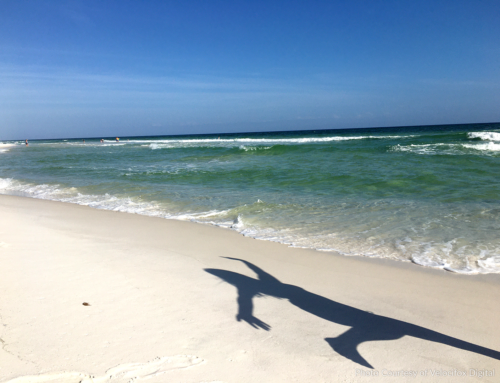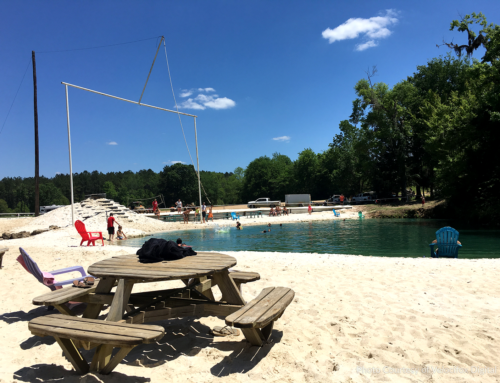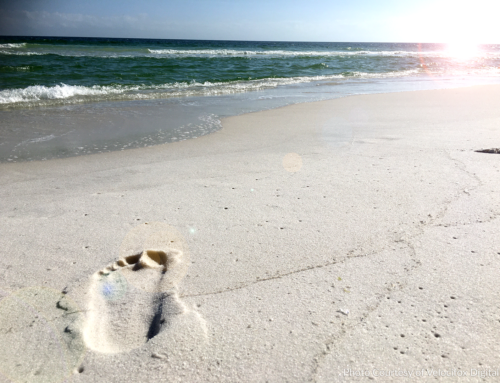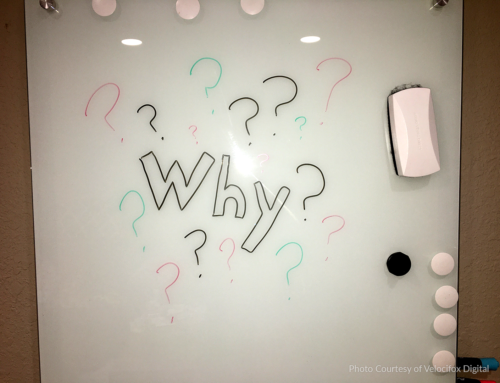Real Estate Video Marketing
A beginner’s guide to DIY real estate video marketing!
Every Realtor seminar and conference you go to today has at least one session dedicated to videos for real estate. Real estate video marketing isn’t as difficult as it seems; sure it’s a tad technical, and there’s a cost associated with getting into it, but my listing agents tell me that their sellers adore it! Telling a seller that their home will be featured in an HD video, syndicated to hundreds of websites, is definitely a great talking point at any listing presentation.
So, to get started with real estate video marketing, you’re going to need some supplies. Let’s start with the basics…
Things You Need to Start Real Estate Video Marketing
1. Prosumer-grade HD Video Camera
As you might guess, “prosumer” is a combination between “consumer” and “professional”. Prosumer video cameras and equipment are abundant; it’s a huge market these days. Don’t get a consumer-level video camera; I can’t stress this enough. I know the demo footage looks great, but trust me, when it comes to filming a low-light wine cellar or capturing a large room in one shot, you’ll thank me. The consumer-level video camera might be HD, but the lenses are designed to capture movement on screen and operate best in outdoor lighting. Another big difference between a consumer video camera and a prosumer video camera is the adaptability to add-on equipment. For example, a wide-angle lens, or even an external microphone (we’ll get into that later). Consumer-grade video cameras are usually built for portability, not mastery of the craft. Just keep in mind that real estate video marketing is, in truth, a professional trade and not a hobby. Your end product needs to look professional!
Your next question is “Which video camera should I get for my real estate video marketing?” and my answer is simple: whichever one you choose! Personally, I shoot on a Canon XA10. Why? We got a good deal on it, and it had the features that I thought were important at the time. Most prosumer-grade video cameras are going to be relatively similar. If you’re looking for in-depth reviews, opinions, and dissections of top prosumer-grade video cameras on the market, I would read this, this, this and this.
It’s my general opinion that you won’t get a real estate video marketing camera that has what you need for any less than $1500. So be prepared to spend that. The bonus is that most of these cameras ARE portable enough to take on family vacations, so they’ll be great for your real estate video marketing, but they’ll also take great video of your kids’ soccer games or your grandma’s 85th birthday party.
2. A Tripod
I know a lot of people who would think that they don’t need a tripod. You’re so wrong. Try to shoot some video of your own house, with your shiny new camera, WITHOUT a tripod. Epic fail! You think you’re steady, but you’re not. You think you’re level, but you’re not. You think you can operate the zoom switch and keep the camera still, but you can’t. I tried this with my first two real estate video marketing adventures, and the results make most viewers seasick, even though I felt VERY steady while I was filming.
The most important thing about the tripod that you get is that it has a level in the head of it, it’s fully height adjustable, and its foot/mount fits your camera. The good news is that these things are pretty much standard. My tripod of choice is the Manfrotto MVT502AM. It folds up nice and portable, and it’s very sturdy. I’m unintentionally rough on it sometimes, and I’ve had assistants drop it, run into walls with it, etc. It’s done me proud over the years!
A tripod is one of those things that you can probably find used on Ebay, Craigslist, or at a local video production shop. If not, buying it new should only set you back about $300. It’s an invaluable asset to my real estate video marketing equipment bag that I couldn’t live without.
3. Video Editing Software
This is going to make a lot of video enthusiasts angry, but here goes: I use iMovie for Mac. I know, I know… it’s consumer-grade, but it has all the features that I need, it’s easy to use, and it was inexpensive! I will graduate to something better when it’s needed, but for the time being, iMovie has been great for me. The key is learning how to use it, and I will review some of the tools that I use most often when I do real estate video marketing. This will serve as outline for anyone who doesn’t want to use iMovie, or if you need to get a similar software for Windows/PC.
The primary features you’ll need in your video editing software is the ability to adjust the light, contrast, color, and audio. Also, the ability to slow down and/or speed up a clip has been very beneficial to me. Light, color and contrast adjustments are important because sometimes when you’re filming a room, it’s hard to tell on the camera’s viewfinder screen if the shot is too dark, too light, etc. The ability to tweak all of those settings in post-production is very handy! Speed comes into play when you were taking panning across a room waaaaaaay tooooooo slowwwwwww…. your viewers will get bored with your slow pans. On the flip side, going too quickly will give them motion-sickness! You’ll find a good speed (you’ll know it when you see it) and you’ll know when a clip needs to be slightly faster or slightly slower, and iMovie allows those speed adjustments. The audio adjustments aren’t used unless someone in the video is talking. When I make real estate video marketing that shows a listing, I simply mute the audio of every clip and overlay music in post-production.
4. An Eye for Video
This is not something you can go out and buy. The only way to get an “eye” for what you like and don’t like in videos is to watch a TON of them, (prosumer and professional grade, don’t bother with the amateurs) and to film and edit a TON of them. Practice on your own house, your neighbor’s house, your friend’s house! Don’t just practice filming; practice editing too! You won’t really know what you’re looking for until you create it on your own and figure out what’s worked and what hasn’t.
There is some amazing real estate video marketing out there for you to watch, and that’s definitely how you should start. Don’t try to be too fancy (especially not to start). You’re showcasing a home, not directing an Oscar-winning drama! Keep it simple, and show the home in the best way possible.
If you want to look at some great sample videos to get your creative juices flowing, here’s some I can recommend:
- 1340 Lexington Parkway by Brittany Gilbert
- 10056 Tween Waters St. by Brittany Gilbert
- 1167 Lake Adair Park Pl. by Brittany Gilbert
- Yorkville Penthouse by David Pylyp
- 577 Shady Point by John Coley
- Indian Rocks Beach by Cyndee Haydon
- 702 1277 Melville St. by Ian Watt
- 1909 Gillette Drive by Jessica Edwards
If you’re bored and want to watch some blockbuster cinema-quality real estate video marketing that is completely off the hook and have insane budgets, check out these:
- Eric Lavey – 6816 Pacific View Dr.
- Ian Adams and Adrian Jenkins – 15 Queen Anne Court
- The Corcoran Group – 1 Main Street #16
The Process – How to Make Real Estate Videos
If you’ve done all the right stuff and you have all the right equipment, taking your video will be easier than you imagined. Here’s how I go about it, but keep in mind that everyone has their own style and flow; you will create your own process once you start doing it.
1. Walkthrough of the Property
When you first arrive at the property that you’re making the video of, do a walkthrough, even if you’ve seen the property before. Previously, you were viewing the home from the eye of a Realtor, and maybe viewing it as a potential buyer. This time, you need to view the property as a filmmaker. Envision the shots you want to ensure that you get as you go through each room. While you’re doing this walkthrough, a great thing to do is go ahead and turn on all the lights and open all the blinds. You can do some staging at this point also.
The important thing to remember about the actual condition of each room is that old saying that the camera adds 10 pounds. This is true when it comes to clutter, personal decor, and colors. Even things that look great in person can sometimes become overpowering in video. Try to neutralize each room as much as possible. I have a few rules of thumb that I use for staging a home for video:
1. If there’s items on a shelf or fireplace mantle, I reduce the number of items by half. 6 items, cleverly arranged on a wall ledge, becomes 3 items. You’re clearing up the visual space; neutralizing it.
2. I try to remove Persian rugs. They look great in person, but in video, they do a dual disservice to the property by covering up the flooring and darkening the room. Additionally, Persian rugs typically have a busy pattern, which catches the eye and detracts from the rest of the room.
3. Couch pillows. Some people have like, 30 throw pillows on their couch. That’s cool, and it usually looks great in person, but for my video shoot, there will only be 2; one at each end of the couch. And if the pillows are a loud color or pattern? Then the couch will be pillow-less!
4. The kitchen is key! Take all the magnets, artwork, calendars and everything else off the refrigerator. Take everything off the countertops, except maybe some strategically placed items.
So now that you’ve neutralized and de-cluttered the property, you’re ready to get your equipment out and create a spectacular real estate video marketing piece!
2. Setup
This might sound like a no-brainer, but it took me a few times to figure it out. Choose a “staging area” for your equipment; a room that you’re not going to shoot, which can hold all of your equipment and accessories. You’ll have the camera bag, camera accessories, the tripod bag, plus whatever personal items you have (car keys, cell phone). You don’t want to unpack all of your equipment in the middle of the living room, because then you have to move it all when you get ready to shoot the living room. Rookie mistake! My room for setup and staging is usually the laundry room or the garage.
Typically, I put the tripod about chest-high. All 3 legs don’t have to be extended evenly; the top of your tripod should adjust to allow you to level the camera, regardless of the terrain or positioning of the tripod legs. Hopefully, your camera battery is fully charged and you’re ready to go!
3. Shot by Shot
I have a specific order of operations; it helps ensure that I screw up less things, and also makes my time spent at the property much shorter. Try to get a system. I try to film the rooms in the order that a potential buyer would see them; if several rooms are visible from one spot in the house, I do the best/most impressive rooms first. This helps me with my editing time in post-production because that’s the order that I want the final video to be in as well.
Before I hit the record button for ANY shot, I check that the tripod head is level. This is very important. I have taken a lot of video where I forgot to level the tripod head first, and it results in a crooked room. Very annoying!
So, I shoot the front exterior first. I do a shot from the street, a shot from the driveway, and a few closeups of appealing features. I do all kinds of shots from every angle… sometimes I start low and pan up. Sometimes I start on the left side of the house and pan right. Sometimes I zoom in on the front door. If there’s beautiful trees in the yard being blown by a gentle breeze, I may just record the house from a single still position, with the rustling trees. The possibilities are endless! Film as much as you can, because it gives you more options in post-production.
Then I film the inside. I film the living room (from at least 2 angles), the kitchen (from at least 2 angles, plus closeups of any nice details), the dining room, the master bedroom, master bathroom, any additional selling feature rooms (game room, home theater, office, home gym, etc.). I rarely film secondary bedrooms and bathrooms, but if they’re selling features, then film them! Lastly, I go to the back yard and film any outdoor eating areas, sitting areas, play areas, vegetation, storage areas, and of course, a pool, lake view, river view, golf course, etc. if there’s anything like that. Then I’m all done!
Depending on the neighborhood or community, I will sometimes film some of the selling features of the community on my way out of the neighborhood. If the neighborhood has things like a tennis court, nice clubhouse, community pool, boat dock, or any other feature, having video of it to work into the end of your video is very valuable.
4. Post-Production
Editing can now begin! This is where your knowledge of your editing software will come in handy. You’ll need to import the video footage from the video camera to your computer, and arrange them, crop them, and add transitions and music. In general, my editing tips are as follows:
1. Shorter is better. The most successful real estate videos are under 3 minutes. Nobody will watch a video of a house for longer than 5 minutes; that’s torture, even if the house is amazing.
2. Add screen text at the beginning and the end of each video. It should have the address of the property and your name and phone number. I also like to have a banner of text at the bottom of the screen that stays there throughout the video which has information on it as well.
3. Put a transition in between each clip. It doesn’t matter what the transition is, but it will give your video pacing and clarity; especially when going from room to room or from inside to outside.
4. Overlay some calming music, preferably royalty-free, to set the mood for the house.
5. Publishing, Optimization, Syndication and Sharing Your Real Estate Video Marketing Piece
This is the most important part! What good is the video if nobody sees it? Start with the obvious… publish your video to YouTube, and be sure that you optimize it for your name, your office name, the property address, and “City Name Home for Sale”. The key to YouTube optimization is to type a long description and add plenty of tags.
Once it’s on YouTube, I would also upload the video to Vimeo. Vimeo is a website that is very similar to YouTube, but they pride themselves on being of a higher quality. Your video will look great on their site, and it’s free, so don’t skip it. Be sure to go through the same optimization steps on Vimeo that you did for YouTube!
Now that your real estate video marketing creation is on YouTube and Vimeo, embed the YouTube link into a blog on your website, in an email to be sent to your email list, and if you feel that it’s your best work, add it to your listing presentation. Additionally, send the link to the sellers, and ask them to share it on their FaceBook page. Once they do, “like” their post, and share it to your own FaceBook business page.
Of course, sharing it via all of your other sharing channels doesn’t hurt either; don’t forget LinkedIn, Twitter, Pinterest and Tumblr if you use any of those sites.
Real Estate Video Marketing: Bonus Round Coming Soon!
I am seeing more and more real estate video marketing being done with a camera (such as a GoPro) attached to a flying drone, and I think these videos look fantastic! I think there’s a right and a wrong way to do it, however. I have made the investment in a drone-and-GoPro setup, and will be adding my findings, advice, and report to this blog once I’ve shot some real estate video marketing with it. 🙂
Oh, by the way, if this post was useful to you at all, please say “thanks” by liking my Facebook page! It means a lot to me! 🙂







